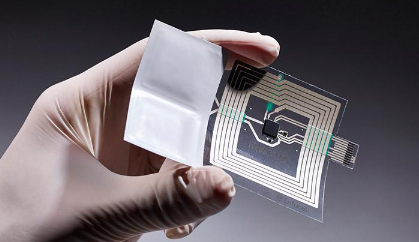Ultra-Thin Primary Lithium Battery CP505050: Exploring the Potential of Non-Rechargeable LiMnO₂ Pouch Cells
Ultra-Thin Primary Lithium Battery CP505050: Exploring the Potential of Non-Rechargeable LiMnO₂ Pouch Cells

In today's rapidly evolving technology landscape, the demand for high-performance, yet lightweight and thin-profile energy storage solutions has skyrocketed. The ultra-thin primary lithium battery CP505050, specifically the non-rechargeable LiMnO₂ pouch battery, has emerged as a prominent contender in this realm, offering a unique blend of efficiency, reliability, and portability. This article delves into the intricacies of this battery type, exploring its construction, applications, advantages, and potential challenges.
I. Introduction to the Ultra-Thin Lithium Battery CP505050
The CP505050 lithium battery is a primary, non-rechargeable battery with a pouch-type design. Its dimensions of 50mm x 50mm x 5mm contribute significantly to its ultra-thin profile, making it a perfect fit for space-constrained applications. The battery's core chemistry is based on Lithium Manganese Oxide (LiMnO₂), a cathode material renowned for its high energy density and stable discharge characteristics. Operating at a nominal voltage of 3.0V, the CP505050 offers a capacity of 3000mAh, making it a powerful yet compact energy source.
II. Construction and Components
The ultra-thin battery CP505050 comprises several key components, each playing a crucial role in its overall performance. These include:
Cathode (Positive Electrode): Made from LiMnO₂, this component is responsible for releasing lithium ions during discharge. The LiMnO₂ material offers high energy density and good stability, ensuring consistent and reliable performance.
Anode (Negative Electrode): Typically made from Lithium metal or Lithium alloy, the anode absorbs lithium ions during discharge. Its composition is chosen for its high reactivity with lithium ions and stability over the battery's lifecycle.
Separator: A thin, porous membrane placed between the cathode and anode. It allows the passage of lithium ions but prevents direct contact between the electrodes, thus preventing internal short circuits.
Electrolyte: A liquid or gel-like substance that facilitates the movement of lithium ions between the electrodes. It is chosen for its high ionic conductivity and chemical stability.
Pouch Case: The flexible, lightweight casing that encloses the battery's internal components. Made from a durable polymer material, it provides physical protection while maintaining a thin and lightweight profile.
III. Applications of the CP505050 Battery
The ultra-thin CP505050 battery finds diverse applications across various industries and consumer electronics. Some of the key areas where it is commonly used include:
Wearable Devices: The thin and lightweight profile of the CP505050 LiMNO2 battery makes it a perfect fit for wearable devices such as smartwatches, fitness trackers, and medical monitoring devices. It provides the necessary power to drive these devices' features while maintaining a comfortable and unobtrusive form factor.
IoT Devices: The Internet of Things (IoT) industry relies heavily on small, energy-efficient batteries to power its numerous sensors and devices. The CP505050 battery offers a reliable and cost-effective solution for powering these devices, especially in remote or hard-to-reach locations.
Security and Surveillance: Security cameras, alarm systems, and other surveillance devices often require batteries that can provide continuous power for extended periods. The CP505050 battery's high energy density and stable discharge characteristics make it a suitable choice for these applications.
Medical Devices: In the medical field, the CP505050 battery finds use in portable diagnostic equipment, implantable medical devices, and other critical medical instruments. Its reliability and safety features ensure that it meets the stringent requirements of the medical industry.
IV. Advantages of the CP505050 Battery
The CP505050 battery offers several advantages that set it apart from other battery types:
High Energy Density: The LiMnO₂ cathode material provides a high energy density, enabling the battery to store more energy per unit volume or mass. This results in longer runtimes and reduced overall system weight.
Stable Discharge Characteristics: The battery exhibits consistent and reliable discharge performance, ensuring stable power delivery over its entire lifecycle. This is crucial for applications that require consistent and uninterrupted power supply.
Thin and Lightweight Profile: The pouch-type design and lightweight materials used in the battery's construction contribute to its ultra-thin and lightweight profile.





